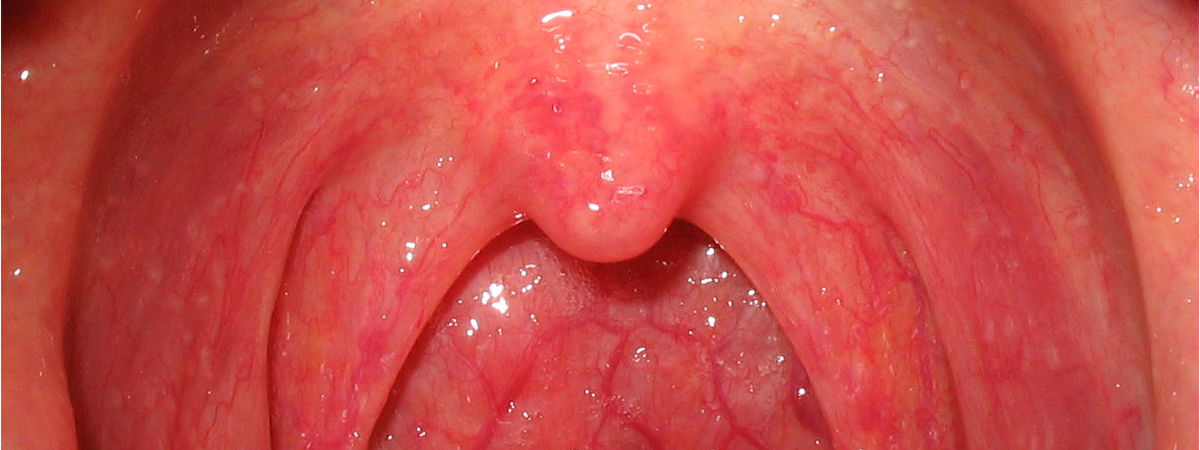Tobacco, alcohol, and very hot foods can damage the pharyngeal mucosa and promote pharyngitis, a common condition that causes a sore throat, discomfort when swallowing, and fever. Learn how to relieve it.
The throat is an inflammation of the pharyngeal wall, or lymphatic tissue has. For this reason, we almost always speak of pharyngotonsillitis because both the pharynx and the tonsils usually become infected at the same time. A viral or bacterial infection usually causes it. Its main transmission mechanism is usually respiratory, that is, by the microdroplets of respiration, sneezing, or coughing, although some causative agents are also transmitted through contact with the hands.
Its incidence varies according to the time of year and the patient’s age, being more common in children. It is not frequent before the age of 3, but its maximum incidence occurs between 5 and 15, especially in spring and winter.
Pharyngitis is one of the most frequent consultations in family medicine and otorhinolaryngology. Its importance lies not only in the fact that it constitutes one of the most frequent reasons for school and works absenteeism (about six days on average for each episode), but it is one of the common causes for which antibiotics are prescribed empirically or one of the most common reasons for antibiotic self-medication.
Streptococci are usually the most common microorganisms in their origin. A few decades ago, they were the main culprits of the most feared complication: rheumatic fever or cardiac involvement secondary to this infection.
At present, adequate treatment with antibiotics in bacterial involvement, or symptomatic treatment in which a viral origin is suspected, is sufficient to resolve a banal inflammation of the pharynx.
Pharynx anatomy
The pharynx is a tube made of muscles that connect the nose and mouth with the trachea and esophagus. It is divided into three parts:
- Rhinopharynx: the upper one; it is about the nasal cavities. It contains the Eustachian tube, which connects to the ear.
- Oropharynx: in the middle, in communication with the mouth. It is separated from the rhino pharynx by the palate.
- Hypopharynx: the lower one, which is continuous with the larynx.
Therefore, it is part of the respiratory and digestive systems. It is essential for functions such as swallowing food, breathing, and phonation. Also, it contains the tonsils, which are a very important accumulation of lymphatic material to protect the mouth from possible infections. Therefore, the pharynx is also involved in the maintenance of the immune system.
Causes of pharyngitis
The most frequent causes of pharyngitis are usually infectious, highlighting some bacteria and certain viruses. Still, there are other non-infectious reasons why this ailment can arise, such as immunological or chemical mechanisms:
Bacterial causes of pharyngitis: most pharyngitis is caused by group A beta-hemolytic streptococci, especially in children, and they are also asymptomatic carriers. In these cases, the pharyngeal involvement is very flamboyant, essential to the use of antibiotics for its resolution.
Other microorganisms implicated in this group are streptococci disgalactiae, group C and G beta-hemolytic, fusobacterium necrophorum, and Neisseria gonorrhoeae. These last two germs have some peculiarities. On the one hand, Fusobacterium necrophorum is also implicated in important visceral complications such as Lemierre’s syndrome in cases not treated with adequate antibiotics, where a jugular vein thrombosis and abscesses in some organs such as lung and liver originate. On the other hand, Neisseria is a sexually transmitted term, therefore. Its target population is usually individuals with sexual activity, that is, from adolescence.
Viral causes of pharyngitis: the viruses usually implicated in this infection are usually adenoviruses, causing fever, pharyngotonsillitis, and painful lymphadenopathy. In another high percentage, the influenza virus is usually involved. In recent years, an upturn has been described in the incidence of pharyngitis and respiratory symptoms due to respiratory syncytial virus. It is also worth mentioning the pharyngotonsillitis caused by the Epstein Barr virus, in the form of mononucleosis, sometimes indistinguishable from bacterial pharyngitis.
Non-infectious causes of pharyngitis: although its percentage and its impact are generally lower than in previous cases, it is important to draw attention to a group of pharyngitis, especially in adults, in whom the process is prolonged and does not improve with antibiotics, since its origin is in gastroesophageal reflux.
In other cases, some limitations of the defenses, vitamin deficiencies, etc., can generate an inflammation that becomes chronic and is usually very annoying and not improving with the most used treatments. Some lymphomas can manifest in this way.
And finally, smoking is usually the protagonist of intermittent inflammations per se and the cause of a deterioration of the local defense mechanisms and, therefore, a facilitator of infections in this area of the respiratory tract.


